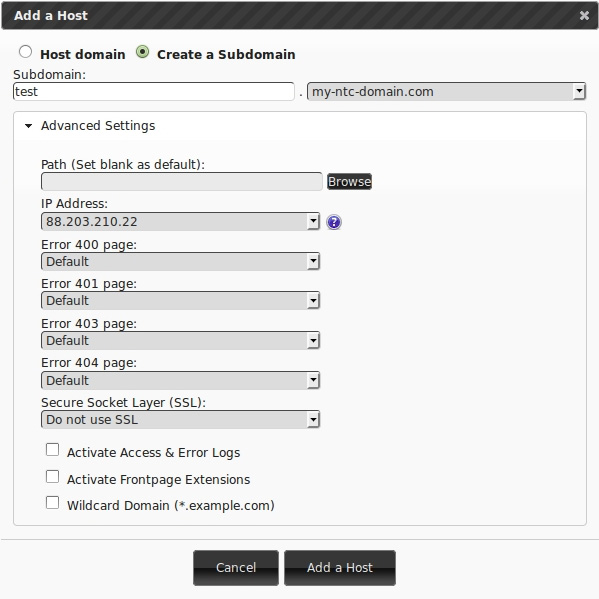Subdomains
Each web address (aka URL) on the World Wide Web is characterized by certain syntax where we could recognize the separate levels within the DNS hierarchy. The first level is presented by top-level domains (TLDs), followed by domain names at the second level and subdomains - at the third.
Subdomains overview
Of all three levels - subdomains boast the greatest flexibility, since they are created entirely at users' discretion (in contrast to TLDs which are pre-defined by certified registrars) and allow a great variety of copies (in contrast to domain names which have only one version).
What is a subdomain?
To give you an example of a subdomain, we will use the web address of our NTC Hosting blog:
blog.ntchosting.comIn this URL syntax we could recognize .COM as the top-level domain (TLD), 'ntchosting' as the second-level domain name and 'blog' as the subdomain. Following the logic of the hierarchical order of web addresses it could be concluded that the subdomain is a sublevel/subdirectory of the larger second-level domain. In this sense, the syntax of a subdomain is much more dependent on what the contents of the domain are than on the type of TLD chosen for the particular web address.
Why use a subdomain?
The most common use of subdomains is for organizing information within a website. By using subdomains, it is possible for website owners to better differentiate separate portions of their website contents, assigning a unique name to each one of them. Subdomains are especially useful for websites of organizations or companies helping them better organize their website contents in correspondence to their hierarchy or structure of services offered, respectively.
Subdomain Examples
For instance, the website of a university (e.g. university.edu) may have a subdomain for each of its faculties (e.g. faculty-of-law.university.edu, faculty-of-history.university.edu, etc.), while a company website may feature a number of subdomains dedicated to each of its departments - sales.companyname.com, marketing.companyname.com, support.companyname.com.
Another popular use of subdomains is for identifying individual computers with their own IP address. For instance, a company could have two separate servers named sales.companyname.com and marketing.companyname.com each one of them containing information about the particular company department it serves.
It is also possible for multiple subdomains to be assigned to different computers containing the same information. This is especially useful for intensively loaded websites to provide back-up for the currently overloaded original machine by sending visitors to an alternative subdomain (i.e. machine).
Subdomains with NTC Hosting
With the Subdomain Manager integrated into the Control Panel of all NTC Hosting plans you will have 100% control over your subdomains. Using the tool you can create new subdomains to your existing domains and manage their settings. This includes setting Custom Error Pages (400, 401, 404, 404), activating Access & Error Logs, enabling FrontPage Extensions, generating SSL certificate, etc.
